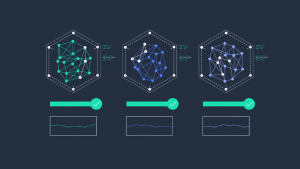theCUBE spotlight: Intel CIO Kim Stevenson’s key takeaways on the future of IT
![]() In closing its latest round of funding, Cloudera has not only secured sufficient capital to fuel operations until its eventual public offering but also gained an important addition to the team in Kim Stevenson, the CIO of lead investor Intel. As the newest member of the Hadoop distributor’s board, the executive brings with her valuable insight into the challenges of managing and operationalizing the growing amounts of unstructured information pouring into the enterprise.
In closing its latest round of funding, Cloudera has not only secured sufficient capital to fuel operations until its eventual public offering but also gained an important addition to the team in Kim Stevenson, the CIO of lead investor Intel. As the newest member of the Hadoop distributor’s board, the executive brings with her valuable insight into the challenges of managing and operationalizing the growing amounts of unstructured information pouring into the enterprise.
Stevenson had shared many of the lessons she’s learned at the helm of the chip maker’s IT organization on SiliconANGLE’s theCUBE over the years. She made her first appearance all the way back at HP Discover 2012, where she highlighted that an analytics strategy must be underpinned by a clearly defined set of business requirements in order to be successful.
Avoiding “technology for the sake of technology”
The digital universe has grown too big to tame, according to Stevenson, a reality that makes it impractical for companies to blindly jump into the data ocean. She says that technology leaders must take it upon themselves to identify the subsets that are most relevant to their organizations and combine those sources with existing assets for a holistic view of the business processes with the biggest impact on the bottom line.
Intel is leading by example. Stevenson details that the company has instrumented much of its fabrication infrastructure to enable continuous operational improvement throughout the manufacturing lifecycle. “All of the data about what happened in a previous process step is transferred to the next tool so that this information becomes the baseline of what happened and not what was supposed to happen for the next processes,” an approach that she claims has noticeably increased production.
Besides its plants, Intel also collects data from social networks to track buzz around various brands and products in real-time. Yet many of its fellow global enterprises have been slow to adopt social analytics, an adoption divide that Stevenson blames on “soft metrics,” or the lack of visibility into advertising investments.
IT at the speed of business
The issue is a symptom of the difficulty IT organizations face in keeping up with the fast evolving requirements of their users. But the status quo is quickly changing, Stevenson observed in a subsequent interview on theCUBE at Dell World 2012 five months later. The industry has made tremendous progress on reducing operational costs in the last decade, and now the focus is shifting towards generating business value. She considers cloud computing to be the primary driver behind this paradigm shift.
In particular, Stevenson says that the rise of new service delivery models has made it possible for organizations to leverage off-premise resources to tackle challenges that have historically could only be addressed internally. “You have provisioned infrastructure with the storage, the network and the compute available and then you’re just laying on the applications. That will cut out an enormous amount of time in what IT can deliver to the business,” she says.
Technology leaders should approach cloud services the same way as analytics, Stevenson continues: identify where they can be put to good use and try to reduce the legacy baggage standing in the way. “You can’t continue to make incremental upgrades to the past or you’ll never have the resources or the time to invent that future,” she stresses. “And that has to be a negotiation with the business part.”
Cloud as a foundation for the modern enterprise
Stevenson is talking from experience. As CIO, she personally spearheaded Intel’s cloud roadmap and had the core applications that the chip maker’s employees depend on to be productive centralized in a unified virtual environment where she says entire services can be provisioned in under an hour. Transitioning to a services-oriented approach helped the company streamline IT operations, and, as the executive detailed during her latest appearance on theCUBE at IBM Edge 2013, improve security at the organizational level.
“We’ve taken what was the ‘walled garden’ approach – keep the bad guys out and the good guys in – and we’re moving to protecting the data at rest and in transit,” she says. “That’s the only way we can fight that, because you can’t tell good guys from bad guys, so don’t try to keep anybody out, just protect your data.”
Intel now employs what Stevenson calls “safe zones” in which employees can freely access corporate applications from any device without having to go through IT first. The chip maker provides a broad range of internal services, she elaborates, including analytical apps that tap into different sources of information to simplify everyday tasks like finding available conference rooms.
A modern enterprise must exploit the full breadth of data available at its disposal to remain competitive, Stevenson argues. She adds that instrumentation and machine learning are becoming equally important as cloud economics make large-scale analytics more and more practical from a cost standpoint.
A message from John Furrier, co-founder of SiliconANGLE:
Your vote of support is important to us and it helps us keep the content FREE.
One click below supports our mission to provide free, deep, and relevant content.
Join our community on YouTube
Join the community that includes more than 15,000 #CubeAlumni experts, including Amazon.com CEO Andy Jassy, Dell Technologies founder and CEO Michael Dell, Intel CEO Pat Gelsinger, and many more luminaries and experts.
THANK YOU













